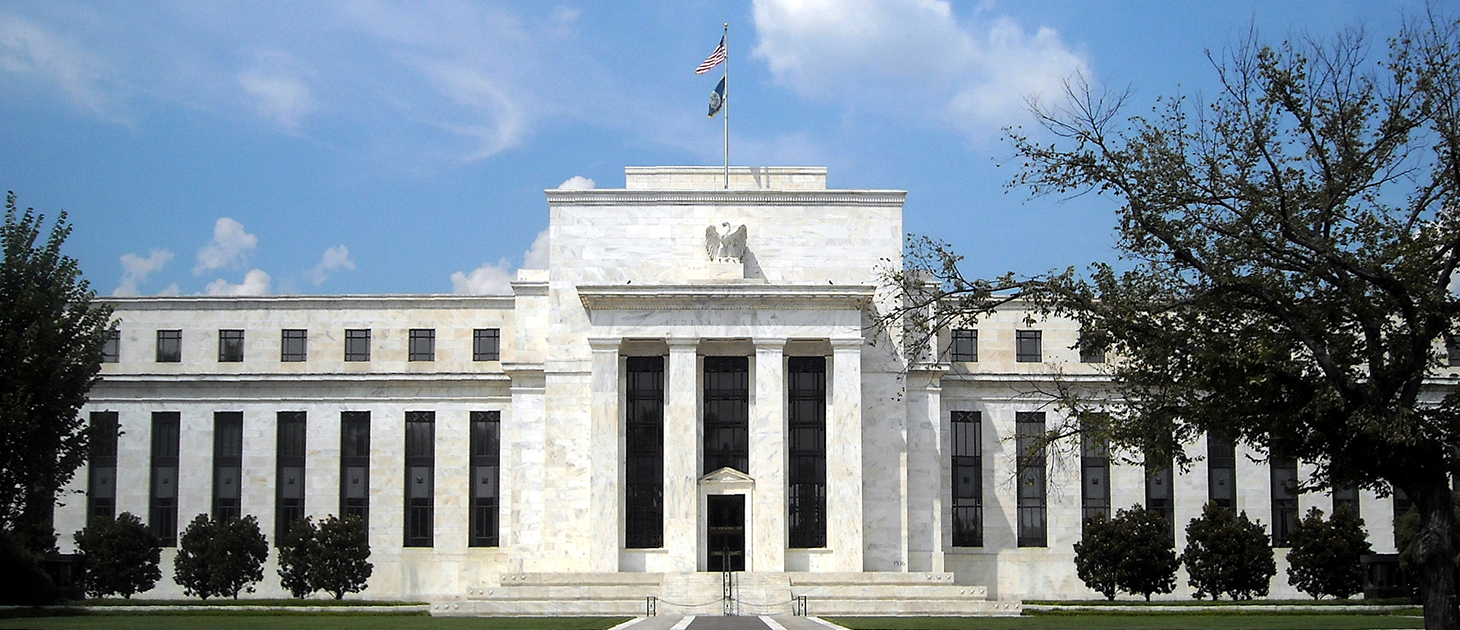Market Senses Uncertainty Ahead of Fed Rate Decision
While investors have welcomed the Fed's interest rate pause, uncertainty in the economy's direction is eroding confidence.

UPDATE: On May 1, the Federal Open Market Committee voted to maintain interest rate range between 2.25% and 2.5%.
The Federal Reserve’s decision to maintain interest rates after the meeting of its governing body in March signaled a change in course, which could be good news for middle-market investors but paints an uncertain outlook for the economy as a whole–but requires some recent Fed history.
After slowly raising its benchmark rate from nearly zero since 2015, the Federal Open Market Committee decided to suspend future hikes indefinitely at the conclusion of its March meeting.
As late as December 2018, the committee expressed interest in “further gradual” rate hikes. A month later, it changed its tone, promising patience “in light of global economic and financial developments,” likely a reference to ongoing trade tensions with China, deteriorating negotiations over the U.K.’s departure from the European Union, and general malaise afflicting the global economy.
The Fed reconvened in March to present its quarterly economic projections, which reflected softening growth. The median GDP forecast for 2019 was lowered to 2.1% from 2.3%, and unemployment projections were elevated to 3.7% from 3.5%.
The revisions weren’t climactic, but they injected enough uncertainty to prompt a brief sell-off in public equity markets, including a 100-point drop in The Dow Jones Industrial Average.
More bad news came days after the report, when the yield of long-term U.S. Treasury notes dipped below that of short term bonds, a phenomenon known as an inverted yield curve that is widely considered a harbinger of recession. Combined with poor hiring figures in February, it sparked suspicions that a downturn was imminent.
Yet the value of long-term Treasury notes ultimately rebounded, and March job numbers more than made up for their February dip.
If Federal Reserve Chairman Jerome Powell’s intention was to find the neutral point where the central bank neither helps nor hinders economic growth, he may have found it. Yet while the business community welcomed a pause on rate hikes, the softening economic projections behind the Fed’s decision suggest a greater threat may be on the horizon for middle-market companies and investors.
Middle-Market Lenders React
Six months ago, banks and their middle-market clients were holding their breath, says Richard Cabrera, executive vice president at Umpqua Bank, a regional bank based in Portland.
As interest rates continued to climb, the cost of borrowing rose too, which along with a convergence of other factors precipitated a steep decline in companies seeking loans to finance growth.
“There was almost a sudden stop of companies talking about making acquisitions, major capital expenditure programs and the expansion of business lines,” Cabrera says. “Companies were wanting to see what was going to develop in the interest rate market.”
IF FEDERAL RESERVE CHAIRMAN JEROME POWELL’S INTENTION WAS TO FIND THE NEUTRAL POINT WHERE THE CENTRAL BANK NEITHER HELPS NOR HINDERS ECONOMIC GROWTH, HE MAY HAVE FOUND IT.
According to a report from American Banker based on data from FIG Partners, bank-sponsored M&A dropped from 17 deals in January to just nine in February—a 25% decline from the previous year.
Higher borrowing costs represent a growing concern for middle-market companies. According to TD Bank’s 2018 Middle Market Survey, rising interest rates were cited as the biggest obstacle to business operations, second only to domestic competition.
But the anticipated stability of the Fed’s benchmark rate for the remainder of the year could come as a form of relief, says Chris Giamo, head of commercial bank for TD Bank. TD Economics, the bank’s independent research division, anticipates the central bank will maintain its “period of patience” into next year and does not foresee any changes coming out of its next meeting, which ends May 1.
“Knowing that rates are likely to hold until 2020 could spur some lending activity that may have been put on hold with the prospect of increasing rates,” Giamo says.
The next batch of economic projections from the FOMC won’t be made available until after its meeting on June 18.
In the Trenches
Despite the tailwinds of steady interest rates, increased lending could hinge on the health of the broader economy and the confidence of borrowers, which data suggests may be declining.
Antares Capital, a middle-market lender, surveyed more than 150 private equity sponsors, middle-market borrowers and private debt investors and found a decrease in optimism since last year.
In 2018, 23% of companies Antares lends to said they felt “very confident” in the U.S. economy, but by 2019, only 4% said they felt the same. The number of borrowers who reported feeling pessimistic also grew to 23%, up from 8% last year. According to David Brackett, managing partner and CEO of Antares, the growing uncertainty among middle-market borrowers can be traced to systemic challenges such as labor shortages, tariffs and increasing competition.
“The borrowers are in the trenches,” he says. “What [they’re] experiencing is a more realistic view of the economy.”
“THE BORROWERS ARE IN THE TRENCHES. WHAT [THEY’RE] EXPERIENCING IS A MORE REALISTIC VIEW OF THE ECONOMY.”
DAVID BRACKETT
Managing Partner & CEO, Antares Capital
The biggest decline in confidence occurred on the international front, according to Richard Aldrich, a strategic marketing and research leader at Antares who helped compile the report, which showed more than half of private equity sponsors are either pessimistic or uncertain in their confidence in the global economy.
A similar sentiment among decision-makers has prompted changes to fiscal policy outside the United States. The European Central Bank on March 7 reversed course by freezing interest rates in response to weakening global economic growth, uncertainty around Brexit, and the U.S.-China trade dispute.
“Maybe what the Fed is seeing is some of the international data and worries about what the banks are doing abroad,” Aldrich says.
Despite declines, confidence in the U.S. economy remains high among investors. The majority of private equity respondents to the Antares survey indicated they don’t expect a recession in the next 12 months. “It’s still overwhelmingly optimistic, but less so,” Aldrich says.
The U.S. economy seems to be shielded by international trends, especially in the middle market, according to Brackett. With less international exposure and a growing focus on recession-proof industries like health care and technology, the middle market presents a relatively safe haven for investors concerned about global volatility.
Antares still sees strong positive momentum in the hiring and business performance of the 400 middle-market companies it lends to, Brackett says, despite apprehension of a forthcoming recession. Meanwhile, high deal prices are forcing lenders and private equity sponsors to become more selective, and that caution is helping private capital investors avoid potential pitfalls.
“Selectivity is critical,” he says. “We’re managing our portfolio well in advance of a downturn that will occur at some point in the future.”

Benjamin Glick is ACG Global’s marketing and communications associate.


